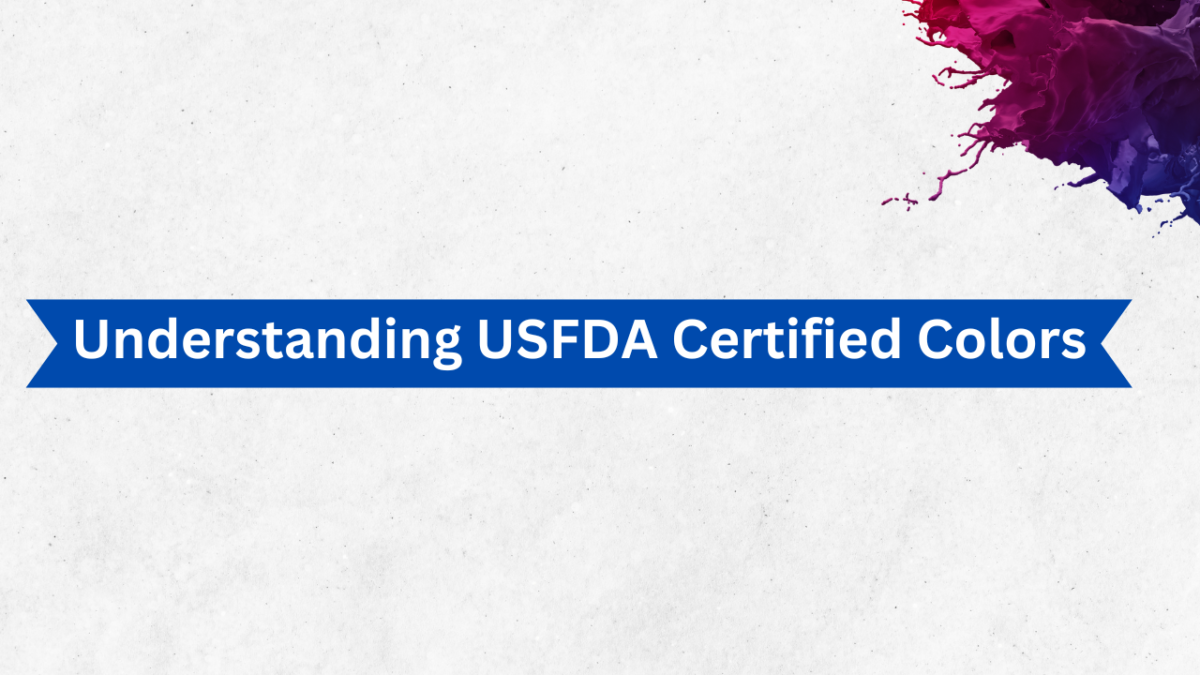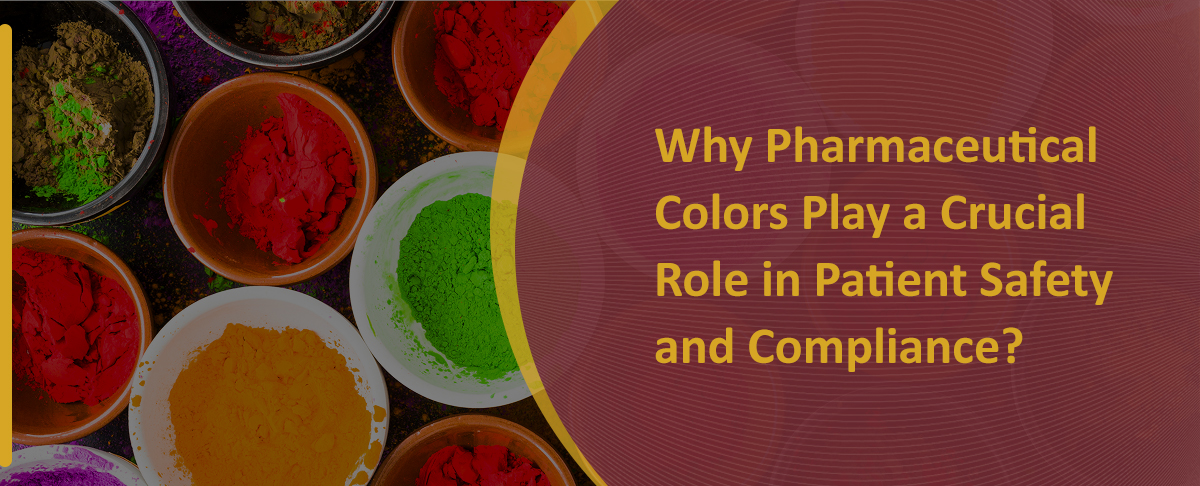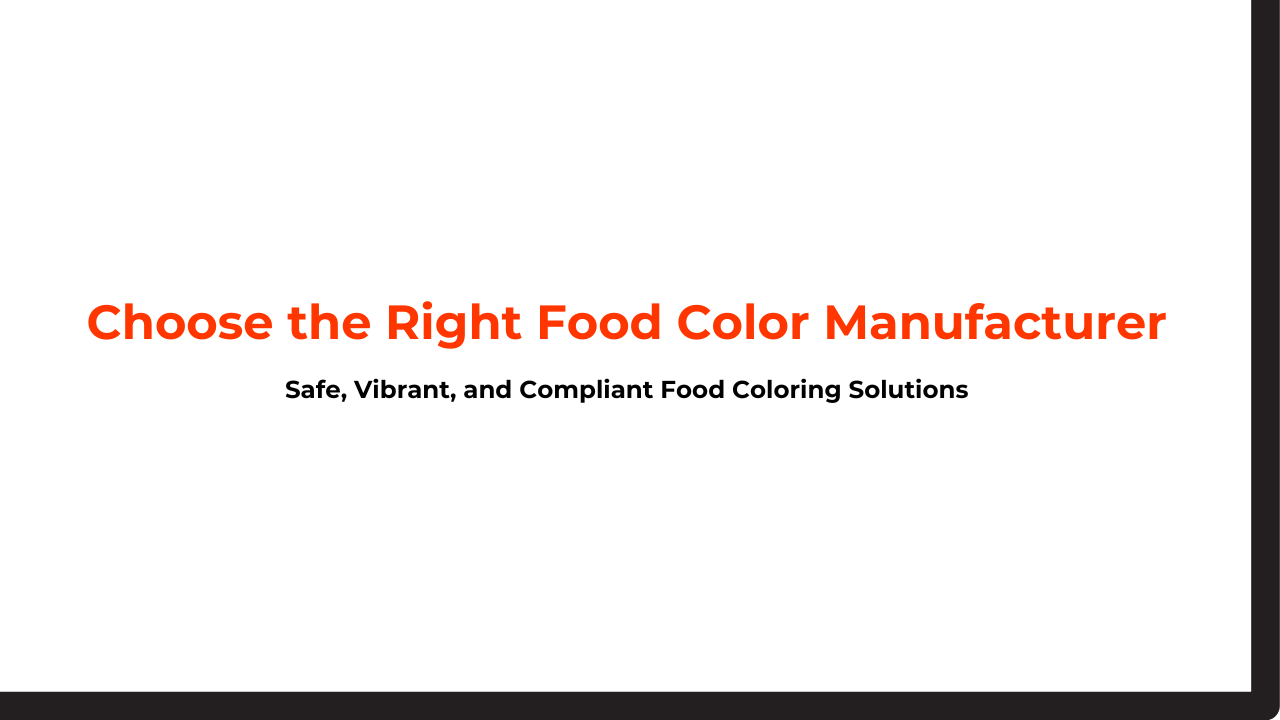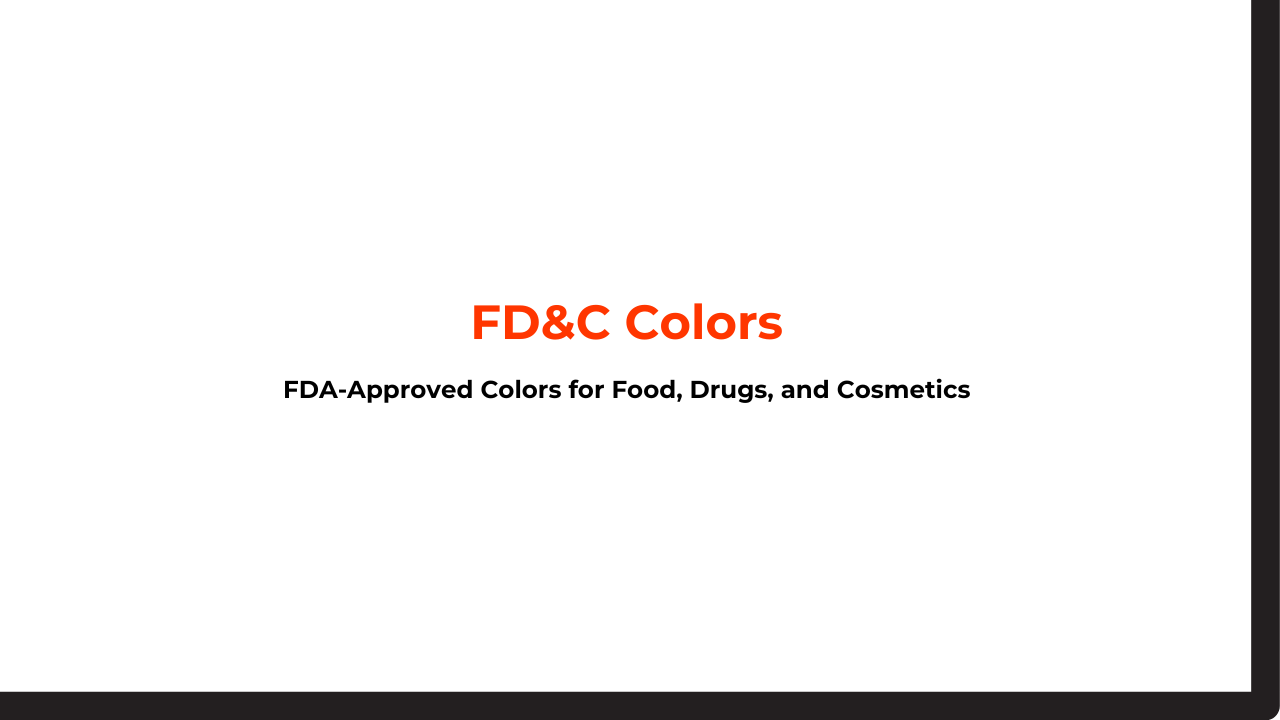Certified colors, also known as synthetic colors or colorants, are color additives that are certified and approved for use in food & beverage items, drugs, and cosmetics. Certified colors, also known as artificial colors, are further identified by their FD&C numbers.
The US FDA regulates and certifies these colors, so they are also known as US FDA-certified colors. Well! This blog post will discuss what US FDA-certified colors are and what their uses and benefits are in various industries.
Certified colors are widely used in various industrial applications, providing more vivid, bright colors with different hues and shades. These certified colors, also known as artificial colors, are popular due to their low cost, high color consistency, greater resistance to light, and ability to provide more vibrant, bright colors more efficiently.
The FDA requires certification and ensures that each batch of these colors is certified under stringent quality control and safety standards before it is approved. If you are still wondering what the U.S. FDA-certified colors are, please continue reading.
What are USFDA Certified Colors?
The term “USFDA-certified colors” refers to synthetic colors or artificial colors that undergo batch certification set by the US FDA for quality measurements and safety standards for color additives, ensuring they meet the desired identity and specifications before application.
These US FDA-certified colors are widely used for coloring various products in a variety of industrial applications, including food, drugs, and cosmetics. Nine certified colors are widely certified and approved for use in various industries. These colors are further classified as FD&C dyes for use in food coloring in the food industry.
9 USFDA-certified colors include:
- FD&C Blue No. 1: FD&C Blue No. 1 is widely used in a variety of food and beverage items, including frostings, icings, confections, cereals, popsicles, and frozen dairy desserts.
- FD&C Blue No. 2: These certified colors are most commonly used for coloring cereals, ice cream, yogurt, baked goods, and snack foods.
- FD&C Green No. 3: They are widely used for coloring ice cream, cereal, sherbet, drink mixers, and baked goods.
- Citrus Red No. 2: These certified synthetic colors are only approved for use in orange peels.
- FD&C Red No. 3: These are used in various food products, including cereals, ice cream cones, popsicles, confections, frozen dairy desserts, frostings & icings, and beverages.
- FD&C Red No. 40: The use of FD&C Red No. 40 is widespread in various food applications, including dairy products, beverages, cereals, gelatins, confections, and puddings.
- FD&C Yellow No. 5: FD&C Yellow No.5 is mainly used in food & beverage items, such as baked goods, yogurt, confections, snack foods, cereals, and condiments.
- FD&C Yellow No. 6: These colors are popular for use in various food products, ranging from baked goods, snack foods, gelatins, cereals, crackers, beverages, sauces, and dessert powders.
- Orange B: These certified synthetic colors are mainly approved for use in hot dogs and sausage casings.
USFDA Certified Colors And Their Uses
As the name suggests, USFDA-certified colors are not only approved for use in food, drugs, and cosmetics in the USA. There is no system of lot-to-lot certification for synthetic dyes, pigments, and lakes used in food, drugs, and cosmetics in any other country. The history of food color additives is broad, as they have been used for decades.
According to the Federal Food, Drug, and Cosmetic Act (FD&C Act), color additives must be certified and approved by the FDA before being used in food, drugs, cosmetics, and medical devices intended for sale in the United States for safety and efficacy.
Color manufacturers require certifications for these colorants or color additives before they can be used in food, drugs, and cosmetics.
Following section 721(c) of the FD&C Act, approved color additives are divided into two main categories: those that must be certified or approved by the US FDA (also known as “certifiable”) and those that are not.
Colors Subject to Certification
These colors or color additives are derived from coal-tar and petroleum-based chemicals, known as “coal-tar dyes” or “synthetic organic” colors. These colors or color additives must be certified and approved by the U.S. FDA before they can be used in any cosmetics, drugs, or pharmaceutical dosage forms (or any other FDA-regulated product) marketed in the U.S.
The FDA requires color additives to pass laboratory testing for supreme composition and purity. Batch certification is further required for color additives that have been repackaged and manufactured after passing batch certification.
Colors Exempt From Certification
These are colors or color additives produced from natural sources, such as plants, trees, and minerals. These colors do not require batch certification for approval. The FDA regulations, however, require that they meet the requirements for identifying, specifying, using, restricting, and labeling artificial colors, whether their use is in cosmetics or other FDA-regulated products.
Furthermore, it is typical for food, drugs, and cosmetics to require batch-to-batch certification by the FDA for synthetic dyes, pigments, and lakes. Such colorants must be certified and permitted by the US FDA, which maintains a positive list of those that are certified.
As part of this process, the US FDA will analyze a sample of the batch to determine whether it meets the dye content, purity, and impurity requirements specified in the regulation.
Conclusion
The bottom line is that the use of USFDA-certified colors is widespread for coloring various products in diversified industry verticals, including food, drugs, and cosmetics. These colors or color additives are known as synthetic colors or artificial colors, which require batch certification to ensure the proper use of colorants and guarantee safety and efficacy.
The USFDA considers various factors when evaluating the safety of new color additives or new uses for listed color additives. In addition, the short-term and long-term effects of consumption, the manufacturing process, composition, and properties of the substance, as well as color stability and its availability as an analytical method to determine purity and amount, are all factors to consider.
For more information on a wide range of FDA-certified colors or color additives, get in touch with us today!




